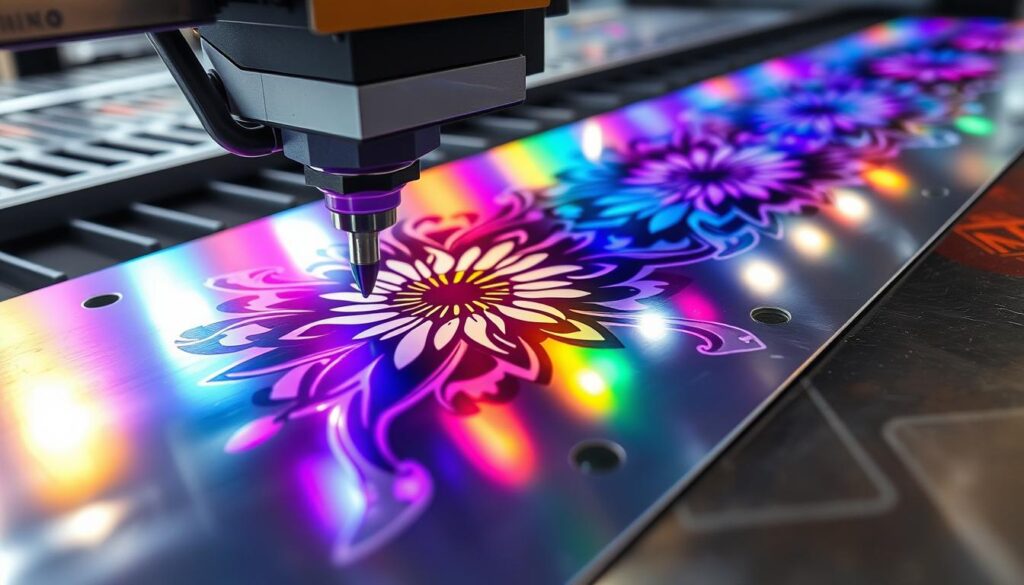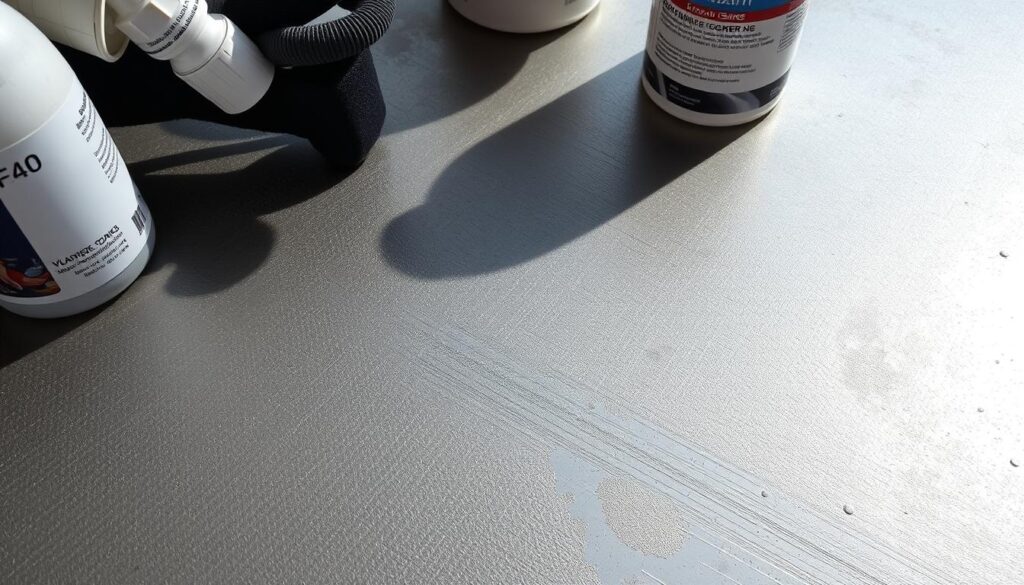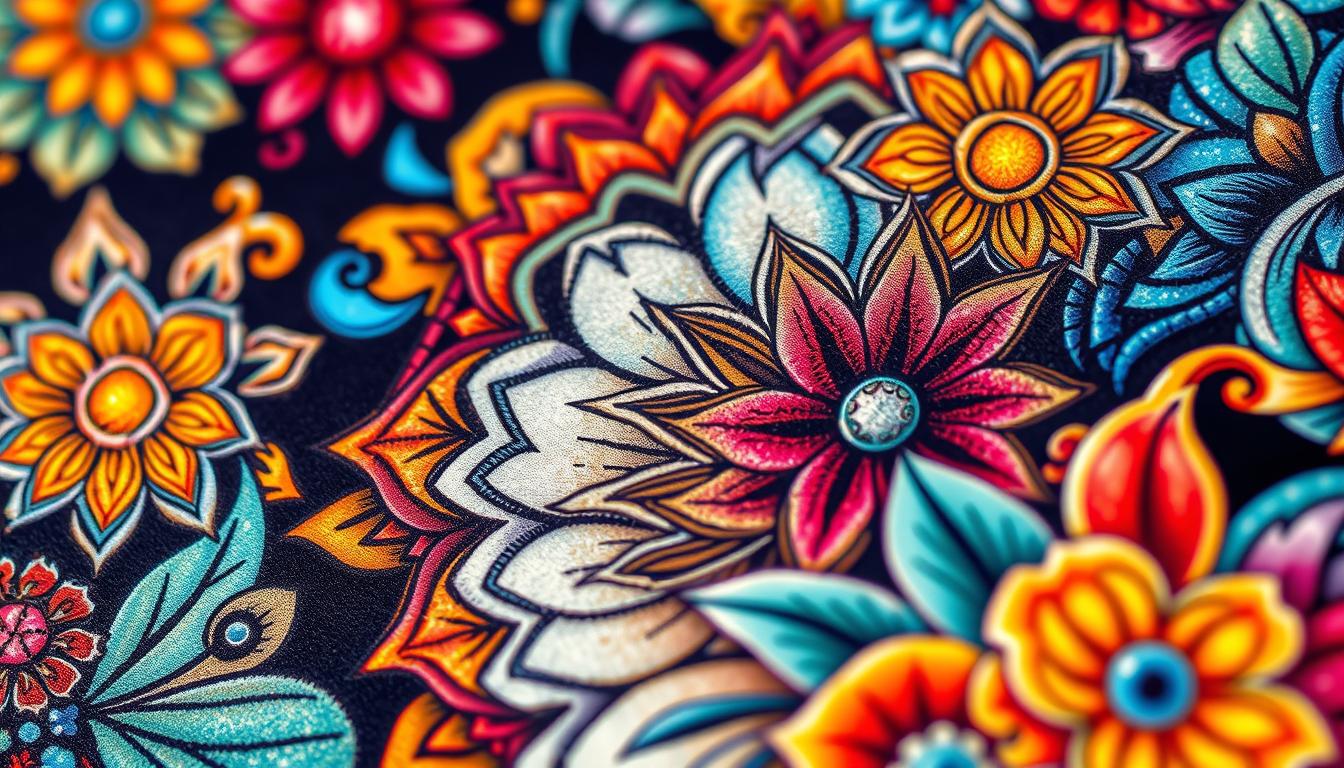Creating stunning designs for UV digital printing on iron needs careful attention and knowledge. Here are some tips to make your artwork pop:
First, make sure your design’s resolution is high. Aim for at least 300 DPI for sharp, bright prints. This ensures your design looks great, even when it’s bigger or printed on iron.
Then, learn about UV curing technology. It uses UV light to instantly dry the ink, making prints last long and look good. Knowing how UV curing works helps you make the most of it in your designs.
Lastly, think about iron’s special qualities. Iron can change color and rust, so you need to prepare and design carefully. Use color management, choose the right file format, and plan your layout well. This way, your designs will look amazing on iron.
Understanding UV Printing Technology Fundamentals
UV curing technology has changed digital printing. It’s fast and works on many materials, like metals. This method uses UV light to quickly dry special inks. This makes prints strong and colorful, without needing heat or long drying times.
The Science Behind UV Curing Process
The UV curing process starts a chemical reaction in UV inks. When UV light hits the inks, they harden fast. This makes the prints stick well to the surface. It also means no need for heat drying, making printing quicker and greener.
Essential Equipment and Materials
- Flatbed UV Printers: These printers can handle many substrates, including metals. They print directly on the surface.
- UV Inks: There are many types of UV inks. Each is made for different printing needs.
- Primer Applicators: Sometimes, a primer is used on metal. It helps the ink stick better and improves print quality.
- Curing Lamps: These lamps give off UV light. They dry the inks fast, making prints strong and scratch-resistant.
Benefits of UV Printing on Metal Surfaces
UV printing on metals has many benefits. Metals like aluminum and stainless steel are very durable. They’re great for many uses, from signs to industrial gear. UV printing on metals makes prints bright and lasting, withstanding fading, scratches, and weather.
It’s also better for the environment. It produces less harmful chemicals than old printing ways.

Surface Preparation Techniques for Iron Substrates
Getting the iron surface ready is key for UV printing success. First, clean it well to get rid of dust, oils, and other stuff. Some iron might need a light sanding to help the ink stick better. Then, use a primer that works well with the metal and ink to make the print look better and last longer.
It’s smart to test a small area before printing the whole thing. This checks if the ink sticks well and looks right. It also lets you fix any problems before you print everything.
- Iron surface preparation is key for optimizing UV printing results.
- Metal cleaning removes contaminants that can interfere with ink bonding.
- Priming for UV printing enhances adhesion and protects the surface.
| Primer Type | Suitable Substrates | Key Benefits |
|---|---|---|
| M87 Primer | Stainless steel, powder-coated metals, aluminum, iron, copper, melamine, acrylics | Dries in under 20 seconds, ready for printing in 2 minutes |
| M74F Primer | Stainless steel, powder-coated metals, aluminum, iron, copper, acrylics | Passes scratch, tape, and wash tests for improved adhesion |
| JP254 Primer | Stainless steel, powder-coated metals, aluminum, iron, copper, melamine, glass, ceramics, enamel coatings | Versatile digital adhesion promoter, eliminates manual application |
By using these steps, printers can make sure the ink sticks well and the print looks great on iron.

Digital UV printing on iron: Best Practices and Guidelines
When printing on iron with digital UV printing, knowing about color management and resolution is key. Also, the right file formats are important for the best results. By following these tips, your designs will pop on metal surfaces.
Color Management and Resolution Requirements
Iron’s reflective surface means you need to manage colors carefully. Use high-resolution images and adjust colors to match the metal’s look. Adobe Photoshop and Illustrator are great for this.
File Format Specifications
Choose file formats that UV printers can handle well. High DPI settings are a must. PDF, TIFF, and EPS are good choices for detailed prints on metal.
Design Layout Considerations
Think about iron’s unique features when designing. Its reflectivity, texture, and any distortions can impact your print. Adjust your design to get the best contrast and color on the metal.
| Key Considerations for UV Printing on Iron | Recommended Practices |
|---|---|
| Color Management | Utilize high-resolution images, adjust colors to account for metal reflectivity, and leverage color management software like Adobe Photoshop and Illustrator. |
| File Formats | Choose file formats compatible with UV printers, such as PDF, TIFF, and EPS, with high DPI settings. |
| Design Layout | Consider the metal’s surface properties, including reflectivity and texture, when designing layouts to optimize contrast and visual impact. |
By sticking to these guidelines, your UV printing on iron will look amazing. Your designs will shine on metal surfaces.
Advanced Design Optimization Strategies
Creating eye-catching metal prints needs a deep understanding of metal’s unique traits. Metal print design optimization uses metal’s reflective quality and color strategy for stunning results.
Designs and metal backgrounds interact in a special way. High contrast between them grabs the viewer’s eye. Using UV printing techniques to show metal grain adds an industrial or modern touch, especially on Dibond prints.
ChromaLuxe metal prints benefit from a white basecoat. It boosts the color’s brightness and depth, perfect for vibrant images. This method keeps the ink from being absorbed, preserving its intensity.
- Leverage the reflective nature of metal to create high-contrast designs
- Reveal the metallic grain for a unique, industrial look on Dibond prints
- Utilize a white basecoat on ChromaLuxe prints to enhance color vibrancy
By learning these advanced strategies, you can make your metal prints stand out. They will captivate your audience with striking and impactful visuals.
Troubleshooting Common Print Quality Issues
Getting consistent, high-quality prints on metal with UV digital printing can be tough. But, knowing how to fix common problems can help a lot. Issues like color accuracy, adhesion, and losing detail are common. A good troubleshooting plan is essential for great UV printing results.
Color Accuracy Problems
It’s important to get colors right in UV printing on metals. Problems can come from bad color management, wrong printer settings, or ink issues. To fix this, pick the right color profiles, do test prints often, and work with your printer maker to fine-tune settings.
Adhesion Challenges
Getting ink to stick well on metal is a big challenge, especially on coated or special surfaces. To help, try different surface prep methods like flame or plasma treatment. You can also use special primers or varnishes to improve adhesion. Keeping the surface clean and handling it gently also helps.
Resolution and Detail Loss
Printing detailed images on metal can be tricky because of UV inks and the printing process. To keep details sharp, use high-resolution images (at least 300 DPI) and plan your designs carefully. Make sure to include enough bleed (3-5 mm) for the printing. Also, work with your printer maker to get the best settings for quality and detail.
By tackling these common issues with the right approach, you can make the most of UV digital printing on metal. This will give you amazing, long-lasting, and detailed prints for your clients.
Conclusion
UV printing technology has changed how we add custom designs to metal, like iron. It combines durability, quality, and flexibility. This makes it a favorite for both art and business uses.
As it keeps improving, UV printing on metals like iron will be a top choice. It creates lasting, high-quality prints. These prints are bright, scratch-resistant, and good for the environment. This makes it great for many branding and decoration needs.
For designers, makers, or anyone, UV printing on metal, including iron, is exciting. It lets us make lasting, unique products. As the tech gets better, the future of UV printing on metal looks very promising. It will open up new ways for creativity and innovation.

Leave a Reply